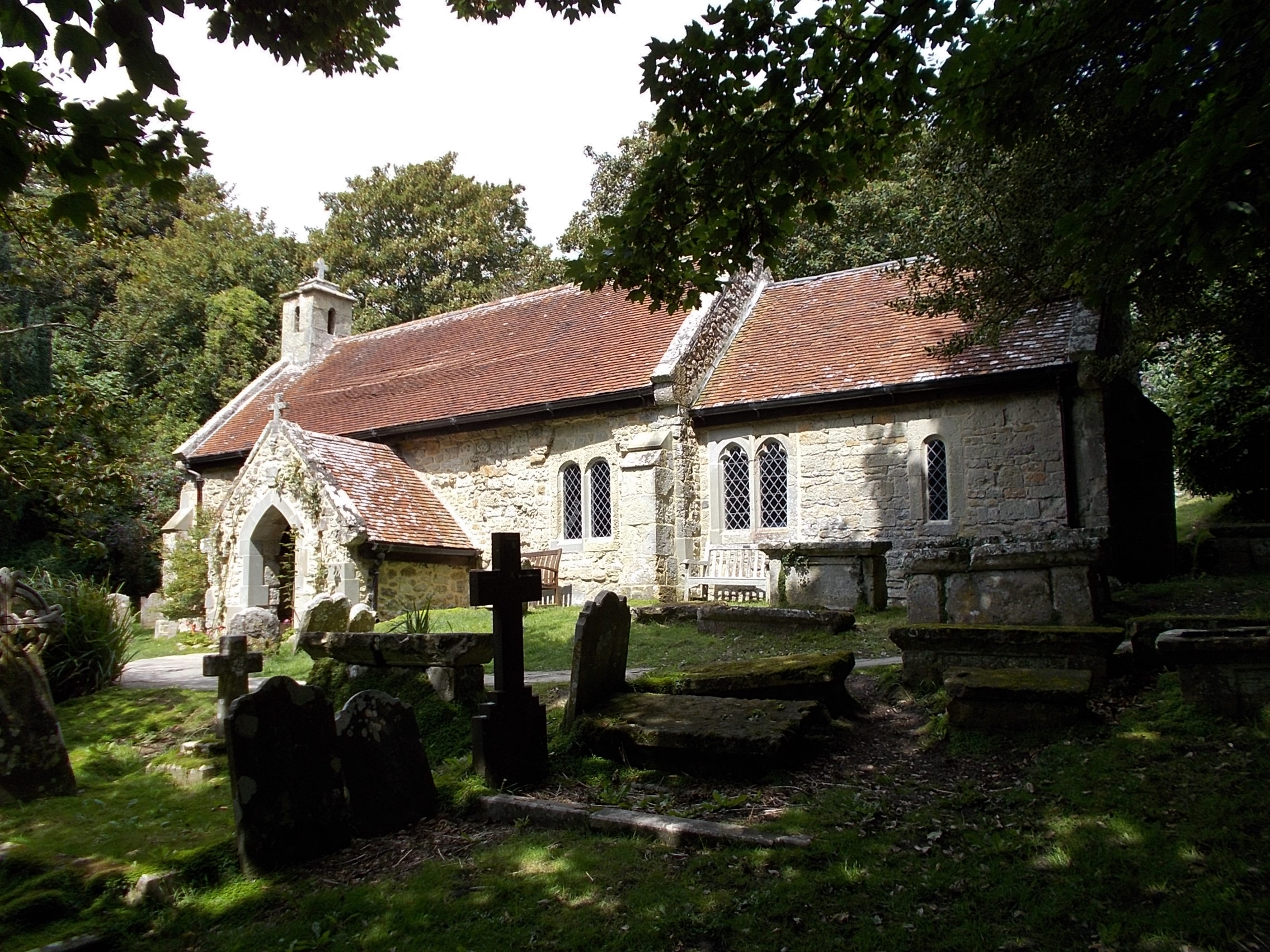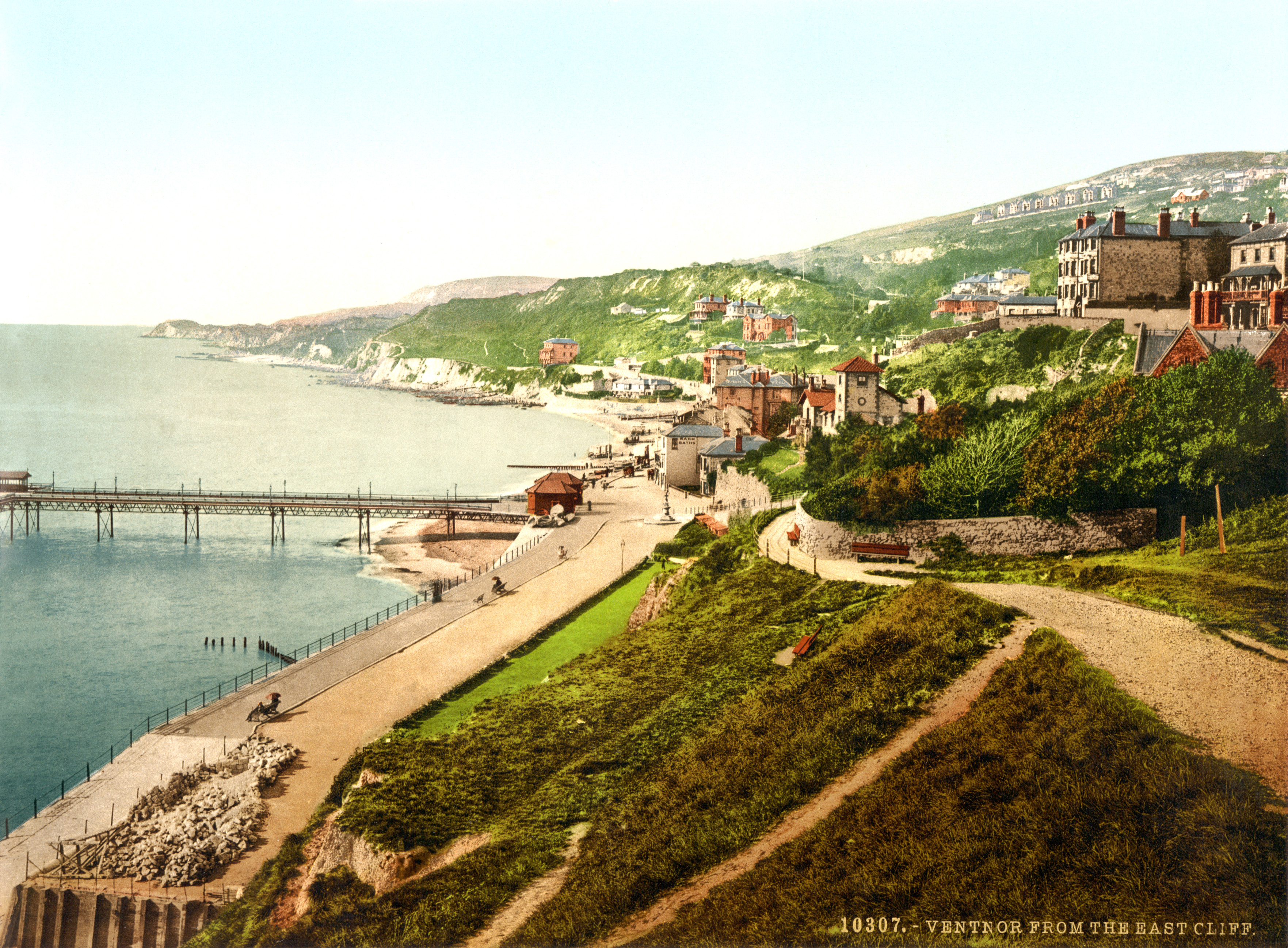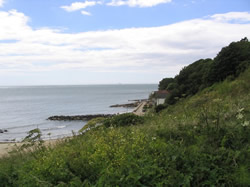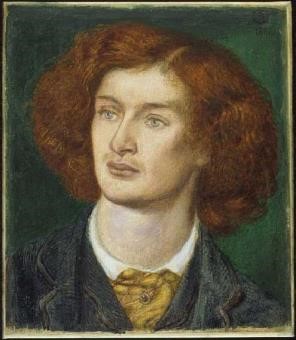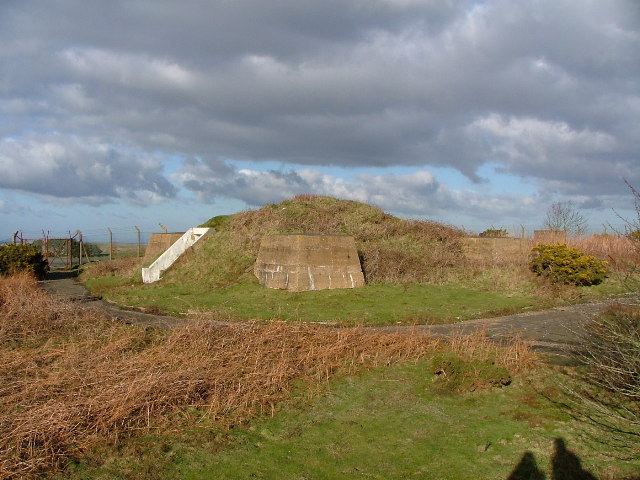|
Bonchurch
Bonchurch is a small village to the east of Ventnor, now largely connected to the latter by suburban development, on the southern part of the Isle of Wight, England. One of the oldest settlements on the Isle of Wight, it is situated on Undercliff (Isle of Wight), The Undercliff adjacent to the Bonchurch Landslips (or "The Landslip") Site of Special Scientific Interest. The main village is backed by a cliff to the north, with the Upper Bonchurch section on the clifftop halfway up St Boniface Down on the main A3055 road. Geography Bonchurch is situated on a stable section of former landslip, its main street (Bonchurch Village Road) running east–west in a valley sheltered to the north by cliffs, and to the south by The Mount, a ridge of slipped rock. Bonchurch Village Road has an adjacent landscaped pond, fed by a Spring (hydrology), spring, on the site of former withy beds. The Shanklin-Ventnor route originally passed through Bonchurch, descending the cliff by the steep Bonchurch ... [...More Info...] [...Related Items...] OR: [Wikipedia] [Google] [Baidu] |
Battle Of Bonchurch
The Battle of Bonchurch took place in late July 1545 at Bonchurch on the Isle of Wight. No source gives the precise date, although 21 July is possible from the sequence of events. The battle was a part of the wider Italian War of 1542–1546, and took place during the French invasion of the Isle of Wight. Several landings were made, including at Bonchurch. Most accounts suggest that England won the battle, and the French advance across the island was halted. The battle was between French regular soldiers, and local English militiamen. Although the French force that landed was considerably larger than the English force, it is thought that the number of French soldiers involved in this battle to be about 500, with the number of militiamen uncertain, with one source stating 300 and another 2,800. The English forces are believed to have been commanded by Captain Robert Fyssher, and the French by Le Seigneur de Tais. The battle was one of several fought between English and Frenc ... [...More Info...] [...Related Items...] OR: [Wikipedia] [Google] [Baidu] |
Ventnor
Ventnor () is a seaside resort and civil parish established in the Victorian era on the southeast coast of the Isle of Wight, England, from Newport. It is situated south of St Boniface Down, and built on steep slopes leading down to the sea. The higher part is referred to as Upper Ventnor (officially Lowtherville); the lower part, where most amenities are located, is known as Ventnor. Ventnor is sometimes taken to include the nearby and older settlements of St Lawrence and Bonchurch, which are covered by its town council. The population of the parish in 2016 was about 5,800. Ventnor became extremely fashionable as both a health and holiday resort in the late 19th century, described as the 'English Mediterranean' and 'Mayfair by the Sea'. Medical advances during the early twentieth century reduced its role as a health resort and, like other British seaside resorts, its summer holiday trade suffered from the changing nature of travel during the latter part of the century. Its ... [...More Info...] [...Related Items...] OR: [Wikipedia] [Google] [Baidu] |
Undercliff (Isle Of Wight)
The Undercliff, Isle of Wight, England is a tract of semi-rural land, around long by wide, skirting the southern coast of the island from Niton to Bonchurch. Named after its position below the escarpment that backs this coastal section, its undulating terrain comprises a mix of rough pasture, secondary woodland, parkland, grounds of large isolated houses, and suburban development. Its sheltered south-facing location gives rise to a microclimate considerably warmer than elsewhere on the island. Although inhabited, the Undercliff is an area prone to landslips and subsidence, with accompanying loss of property over time. Settlements along the Undercliff, from west to east, are: lower Niton (also called Niton Undercliff), Puckaster, St Lawrence, Steephill, the town of Ventnor, and Bonchurch. Geology The Undercliff is a landslide complex in Cretaceous soft rocks, a bench of slipped clays and sands above a low sea-cliff, backed by higher () Upper Greensand and Chalk cliffs. ... [...More Info...] [...Related Items...] OR: [Wikipedia] [Google] [Baidu] |
Bonchurch Landslips
Bonchurch Landslips is a site of special scientific interest which is located north-east of Ventnor, Isle of Wight. A wooded coastal landslip zone, the site was notified in 1977 for both its biological and geological features. Part of the Isle of Wight Undercliff, it is accessed by several footpaths, including V65C, that descends into the landslip via the Devil's Chimney rock cleft; V65, descending via another rock chimney called ' The Chink'; V65b from Ventnor; and V65a from Luccombe. Significance The Bonchurch Landslip (also called East End Landslip) involves a coastal Cretaceous sequence where harder Upper Greensand rocks overlie softer Gault clay. It has SSSI status for its geomorphological interest (the Undercliff itself, and the landslips and mud flows below) and its botanical assemblage. The Gault clay supports established woodland of ash, oak and beech, with unusual lichen species. The lower slips, comprising mixed clay and sandy habitats, support a complex mix of ac ... [...More Info...] [...Related Items...] OR: [Wikipedia] [Google] [Baidu] |
Bonchurch Manor
Bonchurch Manor is a manor house on the Isle of Wight, situated in Bonchurch. History Bonchurch was held before the Conquest as an alod by Estan of Earl Godwin. In 1086 it belonged to William son of Azor, and was of considerable worth, doubtless owing to the grazing value of its chalk downs. Sir John Oglander gives the following fanciful account of its early history: 'The church was erected in the reign of William the Conqueror by John de Argenton, a Frenchman, to whom William Fitz Osbern gave Bonchurch. Argenton "got it to be made a parish by means of his brother's son Walkelin, then Bishop of Winton." ' The Argenteins, however, do not seem to have held any land in the Isle of Wight until the end of the 12th century. It was one of the manors held by John de Lisle at the end of the 13th century of the honour of Carisbrooke Castle Carisbrooke Castle is a historic motte-and-bailey castle located in the village of Carisbrooke (near Newport), Isle of Wight, England. Charle ... [...More Info...] [...Related Items...] OR: [Wikipedia] [Google] [Baidu] |
French Invasion Of The Isle Of Wight (1545)
The French invasion of the Isle of Wight occurred during the Italian Wars in July 1545. The invasion was repulsed. France had a long history of attacking the Isle of Wight, and the 1545 campaign proved to be the last time to date that the French have attempted to take it. Although the French forces, led by Claude d'Annebault, greatly outnumbered those of the English, the battles fought (including the battles of the Solent and Bonchurch) ended without a clear winner. However, as the French were repelled, it could be considered an English victory. Although the operation was inconclusive, the English suffered heavily, including the loss of the carrack ''Mary Rose'' in the Battle of the Solent. Details of the conflict have not been very well recorded, and some accounts claim that the French were defeated at each battle rather easily. French strategy was to effect a landing at Whitecliff Bay and cross Bembridge Down to attack Sandown, and another landing at Bonchurch with a view ... [...More Info...] [...Related Items...] OR: [Wikipedia] [Google] [Baidu] |
Monks Bay
Monks Bay is situated on the southern coast of the Isle of Wight, England just to the east of the village of Bonchurch, it is around in length. It is popular with visitors and is one of the natural highlights of the town, which has hosted such figures as Charles Dickens. The bay is also a good site for local flora, and it has a row of houses which look out to the English Channel. History Monks Bay derives its name from the belief that it is where French monks from Lyra Abbey landed after travelling from Normandy. The bay was also the site of the 1545 Battle of Bonchurch being one of the three locations where 2,000 French troops landed on the Isle of Wight coast. The result of the battle stopped the French attempts to seize the island as its own, making way for continued operations against England in the Italian War of 1542–46. Historically, the area was notable as a venue for smuggling rings, where contraband would be landed here and then transported inland. The bay was als ... [...More Info...] [...Related Items...] OR: [Wikipedia] [Google] [Baidu] |
Algernon Charles Swinburne
Algernon Charles Swinburne (5 April 1837 – 10 April 1909) was an English poet, playwright, novelist, and critic. He wrote several novels and collections of poetry such as ''Poems and Ballads'', and contributed to the famous Eleventh Edition of the ''Encyclopædia Britannica''. Swinburne wrote about many taboo topics, such as lesbianism, sado-masochism, and anti-theism. His poems have many common motifs, such as the ocean, time, and death. Several historical people are featured in his poems, such as Sappho ("Sapphics"), Anactoria ("Anactoria"), and Catullus ("To Catullus"). Biography Swinburne was born at 7 Chester Street, Grosvenor Place, London, on 5 April 1837. He was the eldest of six children born to Captain (later Admiral) Charles Henry Swinburne (1797–1877) and Lady Jane Henrietta, daughter of the 3rd Earl of Ashburnham, a wealthy Northumbrian family. He grew up at East Dene in Bonchurch on the Isle of Wight. The Swinburnes also had a London home at Whitehall G ... [...More Info...] [...Related Items...] OR: [Wikipedia] [Google] [Baidu] |
Isle Of Wight
The Isle of Wight ( ) is a county in the English Channel, off the coast of Hampshire, from which it is separated by the Solent. It is the largest and second-most populous island of England. Referred to as 'The Island' by residents, the Isle of Wight has resorts that have been popular holiday destinations since Victorian times. It is known for its mild climate, coastal scenery, and verdant landscape of fields, downland and chines. The island is historically part of Hampshire, and is designated a UNESCO Biosphere Reserve. The island has been home to the poets Algernon Charles Swinburne and Alfred, Lord Tennyson. Queen Victoria built her summer residence and final home, Osborne House at East Cowes, on the Isle. It has a maritime and industrial tradition of boat-building, sail-making, the manufacture of flying boats, hovercraft, and Britain's space rockets. The island hosts annual music festivals, including the Isle of Wight Festival, which in 1970 was the largest rock music ... [...More Info...] [...Related Items...] OR: [Wikipedia] [Google] [Baidu] |
A3055 Road
The A3055 is an A-Class Road on the Isle of Wight in Southern England. It forms the Southern portion of the ''circular'' around-the-Island A-class loop, the northern section being the A3054. The stretch along the south-west coast of the Island is formed by the Military Road. Because of the road's relatively short length, there are no confirmatory signs with distances, although on a few direction signs at junctions there are distances to the next town. The final destination of the road (Freshwater/Totland or Ryde), in common with most UK roads, is not signed along the whole length of the route. As well as fitting with national practice, this is also because anybody wishing to travel from Totland to Ryde by road would do so via the North coast A3054, as it is much more direct. Numerous landslips have affected the road in recent history, particularly around Undercliff Drive between Ventnor and Niton, which has resulted in sections being closed for repair on several occasions. ... [...More Info...] [...Related Items...] OR: [Wikipedia] [Google] [Baidu] |
St Boniface Down
St Boniface Down is a chalk down near Ventnor, on the Isle of Wight, England. Its summit, , is the highest point on the island, with views stretching from Beachy Head to the east, Portsmouth to the north and the Isle of Portland to the west. It is north of the town. There is reputed to be a wishing well on its southern slope, which requires the wisher to climb up from the south without looking back. In 1545, a French invasion force attempted this against a force of the Isle of Wight Militia commanded by Sir John Fyssher – which allegedly included several women archers- and were routed. In 1940, the radar station was bombed by Ju 87 Stuka dive bombers, which is reconstructed in the film "The Battle of Britain". The top is surmounted by a round barrow. At the eastern foot of the down, on the A3055 road between Bonchurch and Luccombe, a path descends into Bonchurch Landslips via a scenic rock cleft, the Devil's Chimney. Wildlife St Boniface Down is home to the largest c ... [...More Info...] [...Related Items...] OR: [Wikipedia] [Google] [Baidu] |
Chevalier D'Aux
Chevalier D'Aux was a senior French commander who, while leading a foraging party into the Isle of Wight to search for sources of clean water to replenish the stocks of a French fleet, which had just been forced to retire from Portsmouth, was attacked and killed in July 1545 by a group of the local Isle of Wight militia, at Bonchurch. His body was buried at the local cemetery, and when the war between England and France was concluded, his body was exhumed and conveyed back to his home country in 1548. This event occurred shortly after a French attempt to capture the Isle of Wight The Isle of Wight ( ) is a Counties of England, county in the English Channel, off the coast of Hampshire, from which it is separated by the Solent. It is the List of islands of England#Largest islands, largest and List of islands of England#Mo ..., an invasion which was concluded by the English victory at the Battle of Bonchurch. This time, however, as stated, it was not another attempt by the Fr ... [...More Info...] [...Related Items...] OR: [Wikipedia] [Google] [Baidu] |
